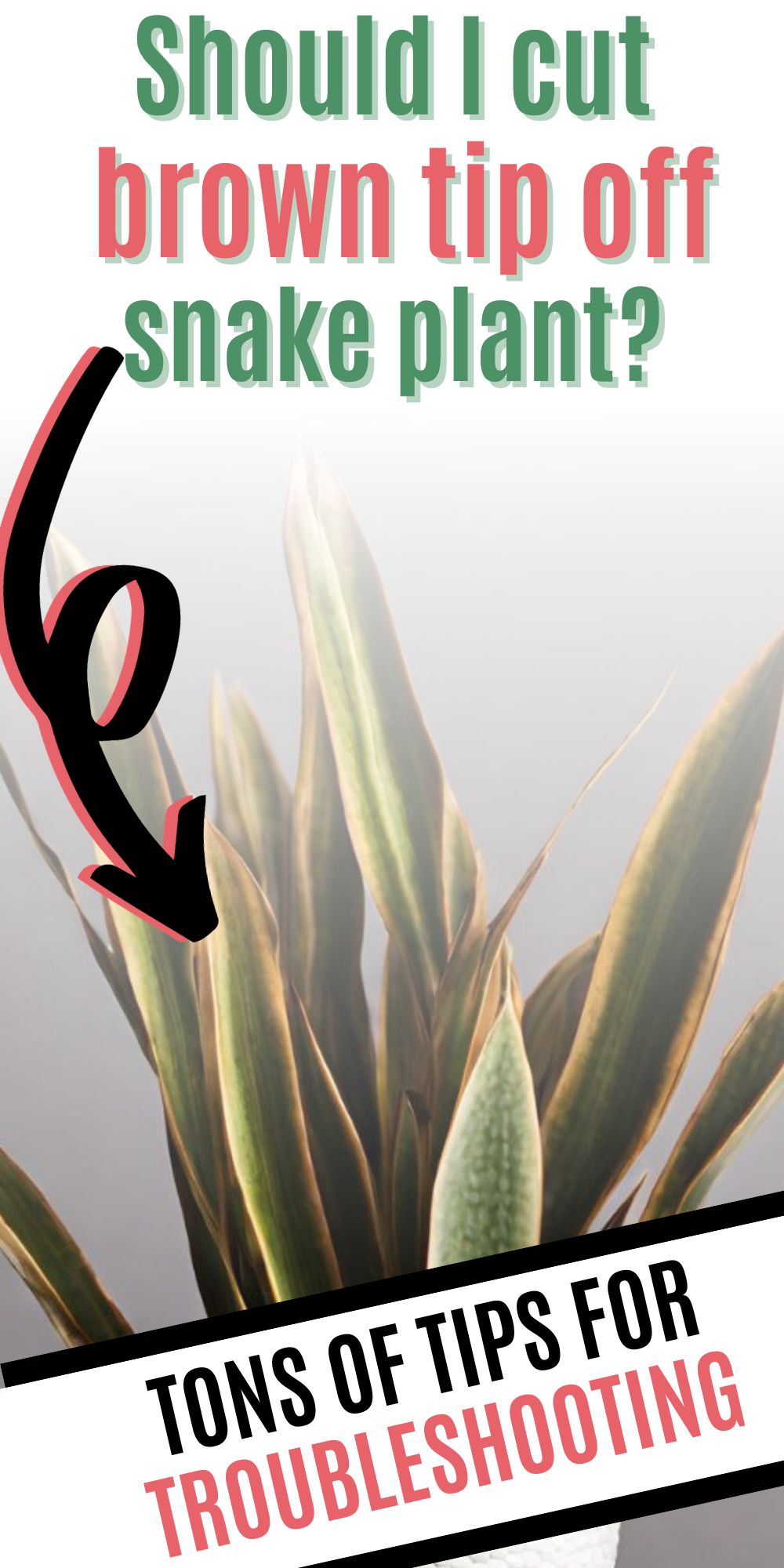Want to learn to take cuttings from your snake plant and grow new plants from it? Here's how to propagate snake plants at home and snake plant care tips!
Snake plants are a super popular house plant because they are easy to care for and don't require much light or frequent watering. They are often labeled as "hard to kill" in plant stores and are popular for that reason!
Snake plant (sansevieria) is also known as the Mother in Law’s Tongue plant. The unique shape of the long, upward-growing leaves make this an attractive plant to add to your collection.

Varieties of Snake Plants
Snake plants come in a lot of varieties! Some of the most common include:
- Black Gold
- Futura Robusta
- Twisted Sister
- Laurentii
- Cleopatra
- Ceylon Bowstring Hemp
- Cylindrica
Why should I propagate my snake plants?
Propagation is the process of creating new plants from existing ones, and it is an effective way to keep your snake plant healthy and vibrant.
Propagation is an important part of caring for snake plants. Taking cuttings is a great way to manage an overgrown plant and putting those cuttings to use is just smart plant ownership!
By propagating your snake plant, you can ensure that it continues to grow and spread, and you can also create new plants to share with friends and family.
Propagation is an important practice for snake plant enthusiasts, since it helps to maintain the health and vitality of these beautiful plants.
Snake plants can be propagated by division or by leaf cuttings. Cuttings can be rooted in soil or in water.
Let's dive into the details of how to propagate your snake plant!
More snake plant goodness!
- Snake plant care guide
- Sansevieria Fernwood care guide
- How to propagate snake plants
- Why is my snake plant getting brown tips?
- Why is my snake plant turning yellow?
- Why is my snake plant drooping?
Free printable snake plant care guide!
Join the (free!) KeepYourPlantsAlive+ community to access this exclusive printable plant care guide! Once you sign up, you can right click & save the JPG care guide. Or keep scrolling for more!
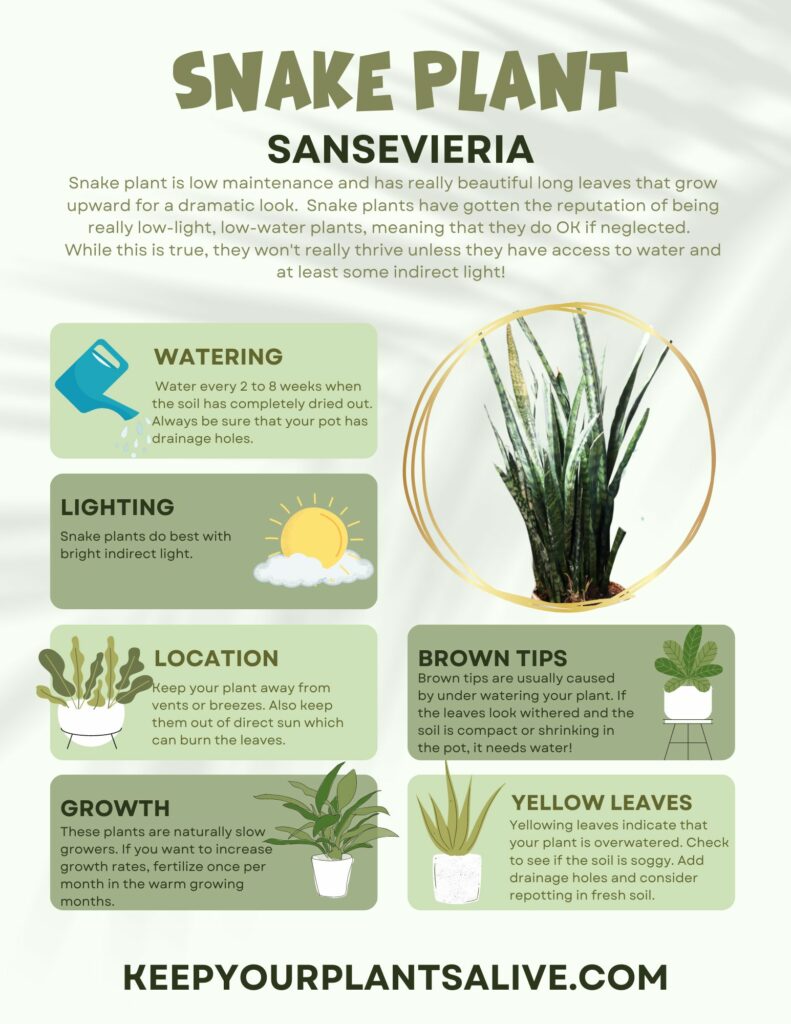

Preparing to propagate sansevieria snake plant
Materials needed
- Snake plant mother plant
- Clean, sharp scissors
- Jar of water OR container of soil
Selecting the parent plant
You never want to take cuttings from an unhealthy plant. Instead, choose a single leaf that is healthy and, preferably, has active new growth.
For snake plants, I usually take cuttings from stems that have grown so long they are flopping over.
This will allow the remaining leaf to recover a bit, and gives you a nice cutting!
Choosing the propagation method
You have two major choices when deciding to propagate your plant: division or cuttings.
Cuttings can be rooted in potting soil or water.
I like to divide plants when they have outgrown their pot. Of course, you can always move them to a larger pot. However, if you want to keep it in that pot, divide it and move some to another container.
Otherwise, cuttings are the easiest way to propagate a snake plant.
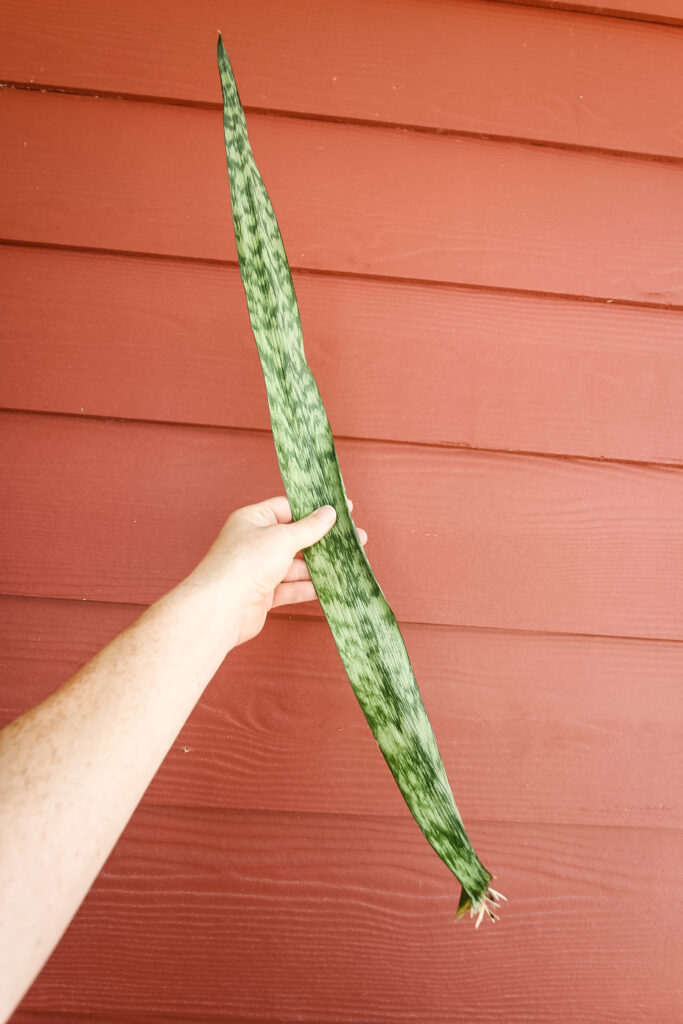
Propagation by division
Step-by-step instructions for dividing a snake plant
- Lay out a towel or tarp to catch loose soil.
- Gently remove the plant from it's existing pot.
- Use your hands to divide the root ball as much as possible into 2 or more sections.
- If necessary, you can use a sharp knife to cut the roots. Do this as little as possible.
- Repot in 2 (or more) new separate containers.
Tips for success
Cutting or tearing the roots of a plant can obviously be traumatic to it. Try to break the roots as little as possible.
Make sure that you repot the plant deep enough in the soil. Snake plants can grow very tall and planting them slightly deeper in the soil can help to support their growing height.
Aftercare for divided plants
Monitor your divided snake plants carefully. It's normal for some of the leaves to go a bit limp or yellow from the trauma of the whole thing.
You typically want to water the plant once after dividing it and then let the soil completely dry out before watering it again.
Be sure that your pots all have drainage holes to keep the roots from getting soggy!
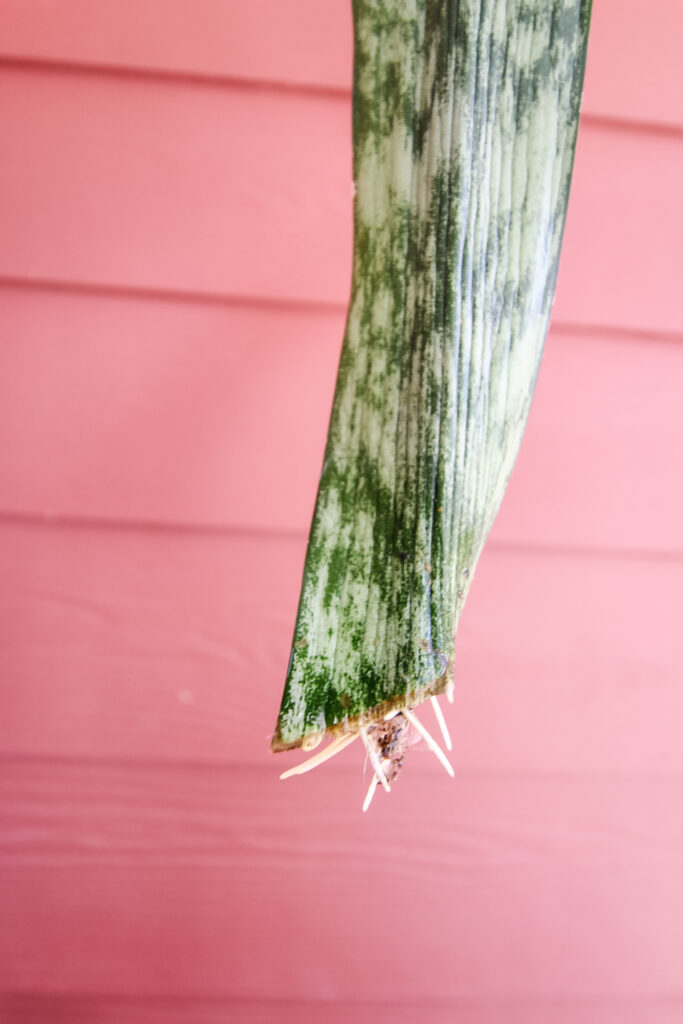
Propagation by cuttings
Step-by-step instructions for taking and rooting cuttings
- Select a leaf that is healthy and preferably has new growth
- Cut a section off the end of the leaf - between 5 and 8 inches long
- Cut the cut end of the cutting into an inverted V shape. This gives more surface area for roots to grow.
- You can place the cutting in a jar of water OR in moist soil
- Optional: cover the jar loosely with a plastic bag to create a greenhouse effect and encourage root growth
- Change the water or water the soil once a week
- Roots should appear in a month. Once the roots are 2-3 inches long, plant in soil.
Tips for success
Don't put the snake plant cutting in too deep of water - that tends to lead to the upper part of the plant rotting or getting mushy.
Some people prefer to take a snake plant cutting and let it sit out and "callous" the wound for 24 hours before placing cuttings in water or potting mix. I have experimented and seen no benefit (but also no harm) from doing this.
Place your plant in indirect light. If it seems a bit sad, it might need a little more light - try a brighter spot!
Aftercare for rooted cuttings
Once your cutting has fully rooted, plant it. It can get it's own pot or be added to the soil of your existing plant to fill out the pot.
Water the cutting once, deeply, then let the soil dry out before watering it again.
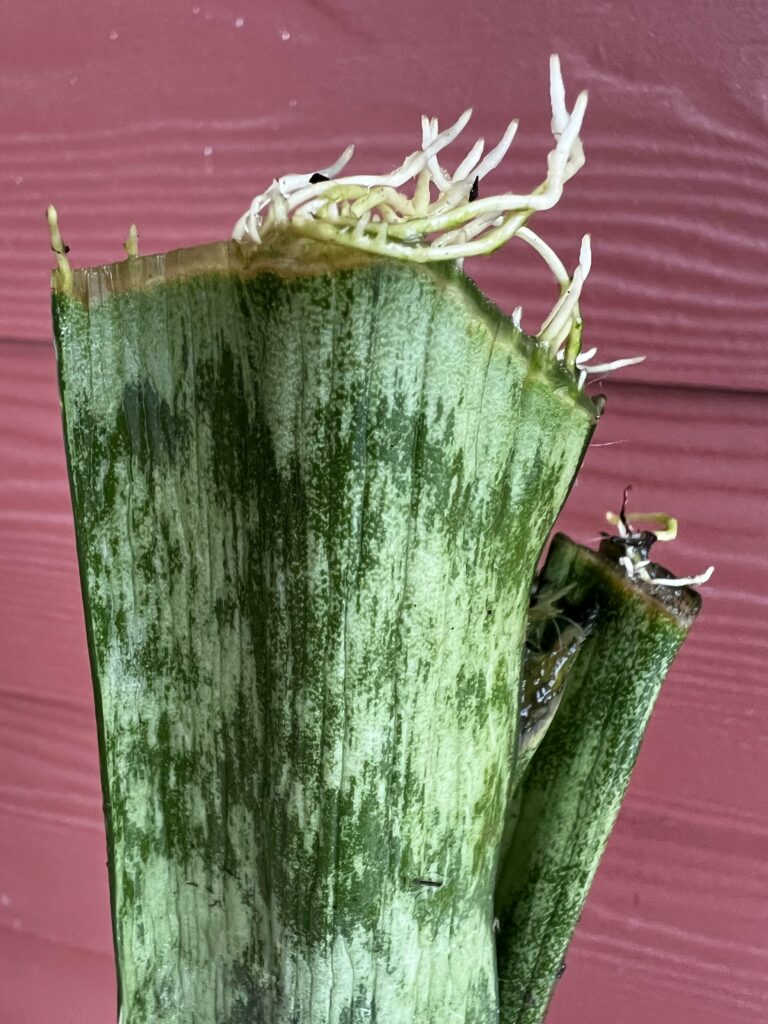
Common problems and troubleshooting
Can you replant a snake plant without roots?
You can always put a snake plant cutting directly in the soil of the plant and hope for the best. They will root in soil - just usually they prefer to root in soil that's slightly more moist than you'd keep your snake plant in.
Why is my snake plant not propagating in water?
The most likely reason that your snake plant hasn't rooted yet is that it just needs more time. These things can be slow to grow. Consider moving it to a slightly sunnier(not direct sun) location to see if that helps!
Is it better to root snake plant in water or soil?
Snake plants rooted in water can sometimes go into shock or struggle when moved to soil. So, rooting them in soil is often the safest bet. The problem with rooting in soil is just that it is harder to visually monitor root growth!
Propagating your snake plant is a great way to fix a floppy plant, fill out your pot, or share a plant with a friend.
I encourage you to experiment with propagation to figure out the exact methodology that works best for you!
Any questions about how to propagate snake plants?
Thanks for reading!


Hey there, I'm Morgan, a houseplant enthusiast from sunny Charleston, South Carolina. Growing up surrounded by my mom's lush orchids and African violets, I discovered the magic of bringing nature indoors. Thanks to the pandemic, I delved deeper into houseplants, discovering their power to uplift moods and transform spaces. I'm here to spill all my secrets, helping you pick the perfect houseplant - and make it happy. Let's keep your plants alive, together! 😊



